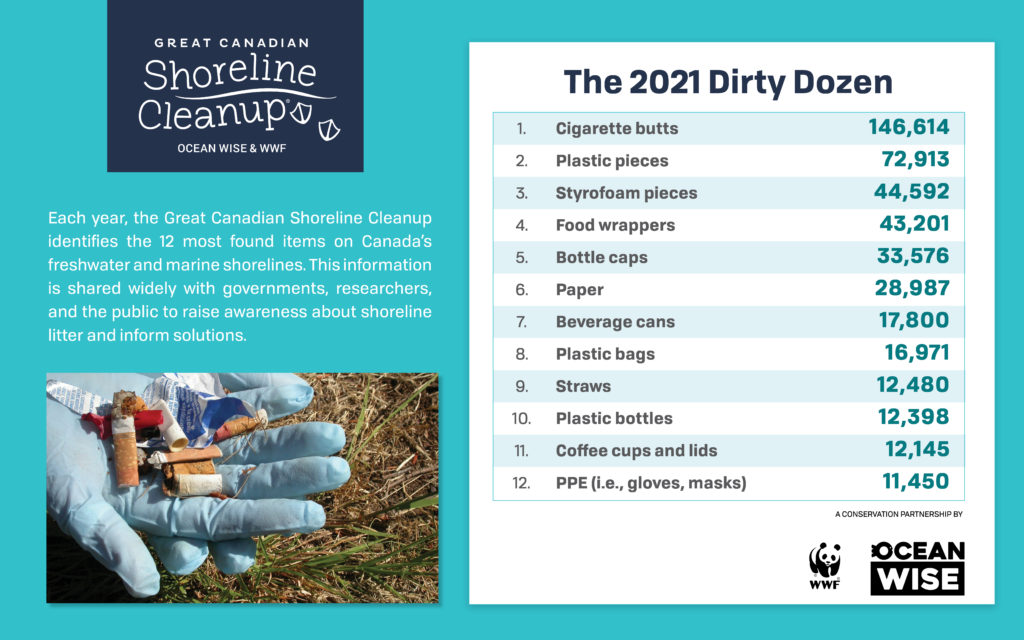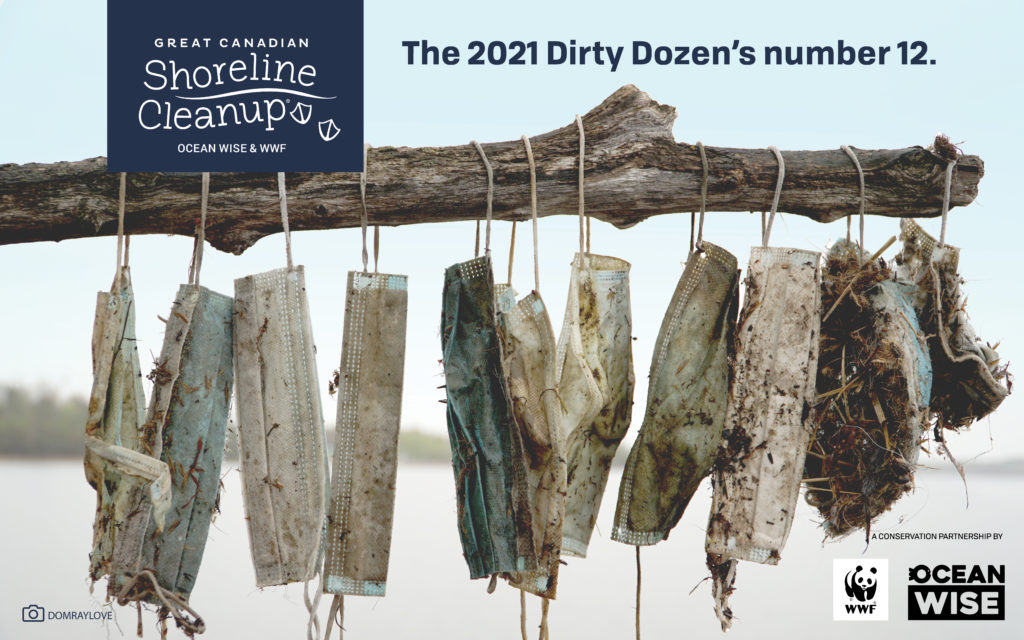Dirty Dozen: Personal Protective Equipment among most commonly found items on Canadian shorelines
The results are in — and they’re dirty.
A new Great Canadian Shoreline Cleanup report for 2021 shows that participants picked up 31,522 kilograms of trash along 2,219 kilometres of Canadian freshwater and marine shorelines.
Every volunteer that participates in a shoreline cleanup tracks the litter they collect using a data card, contributing statistics toward the annual Dirty Dozen list.
Most years, cigarette butts top the “Dirty Dozen” list of most commonly found items on Canada’s shorelines, and 2021 was no different. Volunteers collected 146,614 cigarette butts across Canada!
But this year, for the first time, the program also tracked personal protective equipment (PPE) like gloves and masks, and found 11,450 items of PPE littering shorelines and parks.
Unsurprisingly, single-use food and beverage items — food wrappers, beverage cans, bottle caps, plastic bottles, coffee cups and straws — are up 5 per cent from last year’s cleanups. (This follows a 12 per cent increase from 2019 to 2021, possibly linked to the rise in takeout during the COVID-19 pandemic). We hope the Government of Canada’s impending plastic ban and commitment to the Ocean Plastics Charter can reverse this rising trend.
Of course, not everything found on our shorelines fit into the Dirty Dozen list. Some of the strangest finds included a mannequin hand, a hair straightener, a message in a bottle, and a birthday cake.
Overall, the 2021 Great Canadian Shoreline Cleanup saw 19,508 participants complete 1,998 cleanups across the country.
Join a cleanup, or lead your own at ShorelineCleanup.org.
Great Canadian Shoreline Cleanup, presented by Loblaw Companies Limited and Coca-Cola Ltd., is one of the largest direct-action conservation programs in Canada. A conservation partnership by Ocean Wise and WWF-Canada, Shoreline Cleanup aims to promote understanding of shoreline litter issues by engaging Canadians to rehabilitate shoreline areas through cleanups.



